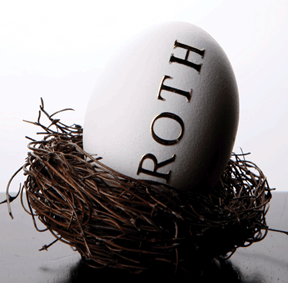Contributions made to a Roth 401 k account are post tax which is the opposite of a traditional 401k. But withdrawals from Roth 401 k are tax-free when made upon the age of retirement.

A Roth 401 k retirement savings plan allows a plan holder to grow his investments while saving for retirement without the need to pay taxes on dividends and capital gains. It is a combined feature of a 401k and a Roth IRA which is administered by the employer. Compared to a traditional 401k, contributions made to a Roth 401 k account are post tax but withdrawals made during the age of retirement are free from tax.
Individuals can access penalty-free and tax-free withdrawal of their contribution because the Roth 401k is funded by after-tax dollars. On the other hand, making withdrawal above 401k contributions is not allowed until the employee reaches 59 ½ years old and has held the account for at least 5 years, otherwise, any amount withdrawn that exceeds contribution are subject to a 10% penalty as well as income taxes.
Example: If an account holder has contributions amounting $25,000 to his Roth 401 k and $3,000 of gains, he is allowed to withdraw $25,000 without any penalties. Any amount from the gains will be penalized by 10% plus taxes.
Furthermore, account owners of Roth 401 k must take minimum distributions (withdrawals are required starting the age of 70 ½). This process is compulsory unless the owner of the account, even at the age of 70 ½ still works for the employer sponsoring the plan or if the account holder owns 5% of the company.
Benefits of a Roth 401 k
- Account owners can defer contribution up to $17,500 for 2014 or $23,000 (additional $5,500) for individuals 50 years or older. All contributions made to a regular 401k or 403b can reduce this limit.
Example: Plan holder under the age of 50 has $10,000 in his 401k plan in 2014. He can then only put $7,500 in the Roth account for that particular year. - Tax deferred contributions are 100% immediately vested for the employees. If they leave their employer, their account can be allowed to rollover into a Roth IRA or even to a new Roth 401 k.
- Employer can make “matching” contribution for some plans (an example is the 5% match).
Example: An employee earns $50,000 and puts $4,000 to his 401k. A 5% match can be done by the employer, therefore contributing $2500 to the 401k (5% of the employee’s salary). In some cases, employer may only match 25% to 50% of the contribution made by the employee. However, the amount of matched contribution will be made on pretax basis. - No penalty and taxes to the account holder when they make withdrawals from the account since the Roth 401 k are funded on post tax contributions. But withdrawals that are more than the amount of the contribution are not allowed unless the employees is in the age of 59 ½ years and the account itself has matured for at least 5 years. If withdrawals are to be done prior this age, a 10% penalty and income tax will be charged on the account holder.
- Even if plan participant is in a higher tax bracket during retirement compared when he is making his contributions to the Roth 401 k, this will result in the lower tax rate than he would normally pay in a regular (pre-tax) 401k.
Disadvantages of a Roth 401 k
- Conventional Roth 401 k has limited investment choices than an IRA. Furthermore, most 401k plans allow changes in investment for about once every quarter. This means, an account holder cannot make a quick move from his investment position. This is not the case however with the self-directed Solo 401k plan which offer unlimited investment options.
- A penalty of 10% with additional taxes will be charged if an individual makes early withdrawals of any amount exceeding the value of the contribution. Death of the employee, permanent disability, and separation from work by the age of 55 are few of the exemptions to the penalty rule.
- Roth 401 k account owners who have reached the age of 70 ½ before the 1st of April must start taking minimum distributions. Should the account owner prefer to leave the funds for his heirs, the Roth 401 k’s estate planning benefits will lack those offered by Roth IRA.
- Employers have the discretion whether or not to offer Roth 401 k. This normally happens when employers see it as a burden to pay administrative costs. Employers can also impose restrictions on who can participate on the plan. Employees that are not yet tenured, union members, part time workers, and non-US citizens are normally restricted by the employers to participate to Roth 401 k.
How to Start a Roth 401 k plan
Roth 401 k plans are sponsored by an employer. An employee gives authority to the employer to keep a portion of their salary to be placed in the plan. The human resource department of a company will provide information on how to start this kind of account with the employer.
When an employee leaves his work, he can choose to leave the Roth 401 k account with his previous employer. Normally a fee will be charged by the employer for managing an ex-employee’s Roth 401 k account. An account holder can also cash out the funds from his Roth 401 k but it would be considered as early withdrawal, therefore subject to a 10% penalty on any amount exceeding the total contribution. It is recommended to rollover the previous Roth 401 k account to new Roth 401k solo account or a Roth IRA.
